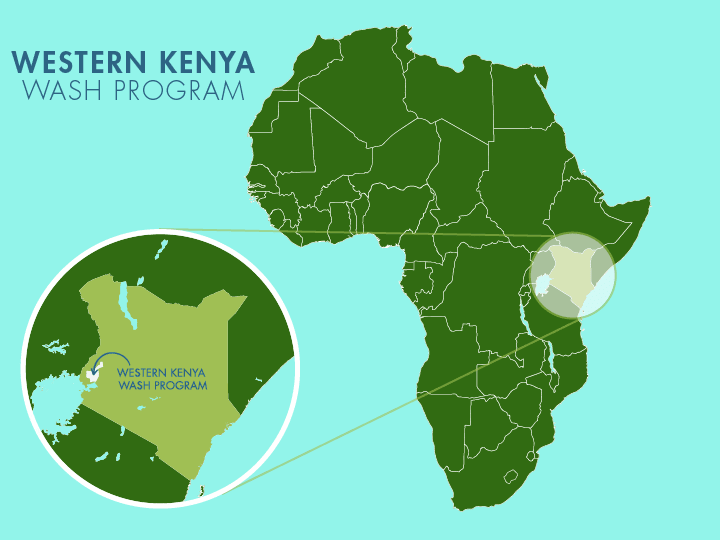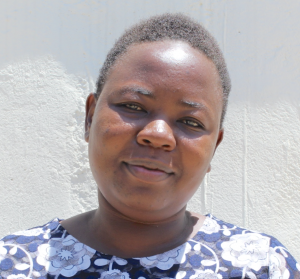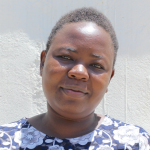One hundred forty people in the Lusumu Community constantly hunt for water. The Richard Mwangala Spring is overcrowded, and the water that flows from it isn't safe to consume. Their only other option is to search for streams or puddles to fill their jerrycans. Being locked in this crisis, with no safe water, makes life in the Lusumu Community very challenging.

Field Officer Betty Muhongo described the spring. "The spring is located on a gradual slope, and because there is no cutoff channel, dirty water from the road and farm plots around comes directly to the spring, making [the] water unsafe for human consumption."
Mitchell is fifteen. She is accustomed to water being a constant source of stress in her life, when it should bring peace of mind.

Mitchell.
She spends too much time searching for water and waiting for her turn to fill her jerrycan—so much time that her education suffers. She doesn't have time to play with friends. It's hard to see outside of the day-to-day struggle and dream of a future when your most basic needs aren't met.

An alternative "water" source that Mitchell uses.
"Most of the time, especially weekdays, [I] am unable to finish my assignments and do some revision (study), and this is because after school I have to help fetch water at home. Sometimes you find the waterpoint is crowded, leading to spending much time waiting for your turn," she shared.
Mitchell’s story mirrors that of so many children in Lusumu. Education, health, and even simple joys like playtime are pushed aside for the daily task of water collection. Families live with constant anxiety, knowing the water they work so hard to gather may still cause illness.

But life in Lusumu does not have to remain this way. The Richard Mwangala Spring can be transformed into a protected, reliable, safe waterpoint. A concrete headwall and sanitary drainage system would prevent contamination, while a collection area would make fetching water easier and faster. Children like Mitchell could spend more time in the classroom and less time in crowded lines. Parents could use their energy for farming, business, and raising their families instead of worrying about the next jerrycan.
Clean water is the first step toward unlocking potential. It restores health, creates opportunities for education, and empowers communities to dream bigger than mere survival. For Lusumu, safe water would mean so much more than full jerrycans—it would mean freedom and hope for the future.

Mitchell dreams of a future where no child has to choose between studying and searching for water.
"My future plan is to work extra hard at school, so that I can ensure that each family has water at their doorstep. That will help pupils like me achieve their academic goals," she remarked.
Steps Toward a Solution
Our technical experts worked with the local community to identify the most effective solution to their water crisis. They decided to safeguard the existing flowing spring.
Spring Protection
Springs are natural water sources that originate from deep underground. As water travels through various layers of the earth, it undergoes a natural filtration process, making it cleaner and safer to drink. To protect these spring sources from contamination, we construct a waterproof cement structure around layers of clay, stone, and soil. This design channels the spring water through a discharge pipe, facilitating easier, faster, and cleaner water collection.
Chlorine Dispenser
As an extra measure towards water quality safety, uniquely engineered chlorine dispensers are installed at all of our spring protection projects so community members can treat their water with pre-measured doses of chlorine. The chlorine treats any possible contamination and stays active for two to three days, ensuring water stays safe to use even when stored at home. Chlorine delivery and maintenance of the dispensers are part of our ongoing community support.
Community Education & Ownership
Hygiene and sanitation training are integral to our water projects. Training is tailored to each community's specific needs and includes key topics such as proper water handling, improved hygiene practices, disease transmission prevention, and care of the new water point. Safe water and improved hygiene habits foster a healthier future for everyone in the community. Encouraged and supported by the guidance of our team, a water user committee representative of the community's diverse members assumes responsibility for maintaining the water point, often gathering fees to ensure its upkeep.

 Protected Spring
Protected Spring
 Rehabilitation Project
Rehabilitation Project


















